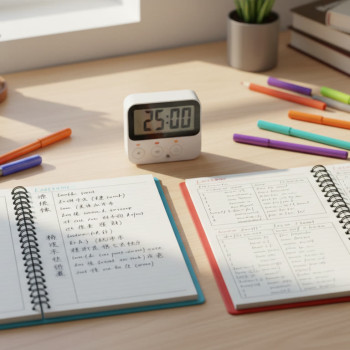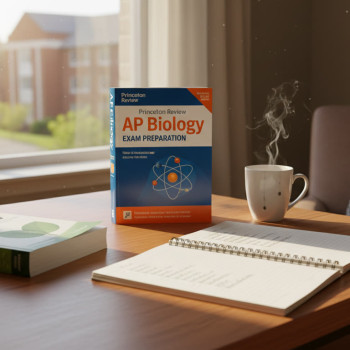Why Version Control Matters for AP Essays
Every AP student knows that a great essay doesn’t pop out fully formed. It’s patiently coaxed into being: drafted, knocked back, revised, polished, and—ideally—proofread one more time. But when that process involves multiple drafts, teacher comments, peer suggestions, and anxious late-night edits, the file chaos can be real. Without a clean version-control workflow you can spend more time chasing the right file than improving your argument.
This post gives you a practical, human-friendly approach to version control for essays using modern Docs and comment-based workflows. It’s written for AP students and their parents who want calm, repeatable systems to produce essays that reflect hard work and sharp thinking—whether that essay is for AP Language and Composition, AP English Literature, AP History, or any AP subject with a written component.
Big idea: Treat essays like code (but kinder)
Programmers use version control to track changes, collaborate, and restore working versions. You don’t need GitHub-level complexity to get those benefits. All you need is a consistent naming system, disciplined use of comments/suggestions, and an agreed process with reviewers (teachers, tutors, parents, or peers).

Core Principles of a Docs/Comments Version-Control Workflow
- Clarity: Every draft should clearly state its status (Draft, Under Review, Final-For-Submission).
- Traceability: You should always be able to find the last instructor-reviewed version and the student’s most recent changes.
- Non-destructive edits: Use suggestions mode or keep separate copies so earlier versions remain recoverable.
- Actionable feedback: Comments should include a short action (e.g., “Clarify this claim—add evidence from Source B,” not just “This is weak”).
- Responsibility: Everyone involved knows their role—who types, who comments, who verifies changes.
Step-by-Step Workflow: From First Draft to Submission
Below is a straightforward workflow that works for single students, students working with a tutor (for instance, Sparkl’s personalized tutoring), or classroom teachers. Adopt it, adapt it, but keep the key checkpoints.
1. Create a Master Document
Open a new document and name it with a clear pattern: Course_EssayTitle_StudentLastName_v1 (for example: AP_Lang_RhetoricalAnalysis_Jones_v1). That naming convention helps when an inbox or cloud folder fills up.
2. Do a Focused First Draft
Write your first full draft without obsessing over perfect phrasing. The goal is to get structure and argument in place. Time-box this (e.g., 60–90 minutes). Save it and increment the version number: v1.
3. Self-Review with a Checklist
Before sharing, go through a short checklist:
- Is the thesis clear and precise?
- Does each paragraph have a topic sentence and evidence?
- Have you cited sources properly (where required)?
- Are transitions present and purposeful?
- Is the conclusion tied to the thesis and not just a summary?
Make quick changes in Suggesting mode or highlight sections to revisit. Save the document as v1.1 if you make light edits; if it’s a major overhaul, use v2.
4. Share for Feedback—With Instructions
When you share the document (teacher, tutor, peer reviewer), add a short message at the top of the doc with the date and the specific feedback you want. Example:
Requested feedback (Oct 8, 2025): Focus on argument strength and evidence integration—please add comments with suggested wording or specific sources to consult. Thank you!
Asking for particular kinds of feedback prevents vague comments like “Improve this.”
5. Use Comments Strategically
Good comments follow a simple formula: Observation → Reason → Action. For instance: “This paragraph uses a generalization (Observation). That weakens the claim because it lacks specificity (Reason). Could you add a concrete example from Source X or tighten the language to be less absolute? (Action).”
6. Respond to Comments Inline
When a reviewer comments, reply to the comment with your plan: “I will add a quote from the text in paragraph two and tighten the last sentence.” Then implement the change in Suggesting mode. This keeps the conversation attached to the exact place in the text.
7. Accept/Reject Changes Intentionally
After revision, mark the doc status at the top: Under Revision by Student — Next Review on [date]. When you make changes, reviewers can see them and either accept or reply. Finalize the version as v3 or v4 when you and the reviewer agree it’s ready.
Roles and Responsibilities Table
| Role | What They Do | Best Practices |
|---|---|---|
| Student | Writes drafts, implements suggestions, updates version numbers. | Use Suggesting mode for edits; reply to comments with action plans. |
| Tutor/Teacher | Leaves focused comments, checks evidence and logic, approves final version. | Follow the Observation→Reason→Action comment pattern; set clear review deadlines. |
| Parent/Peer Reviewer | Reads for clarity, grammar, and argument flow; flags big issues. | Limit line edits. Prioritize comprehension and big-picture comments. |
Practical Tips to Keep Your Workflow Calm and Effective
- One change per comment: Resist multi-issue comments. Keep feedback atomic so it’s easy to address and track.
- Use headings for meta information: At top of document, keep a short log with dates, status, and who reviewed what.
- Archive older versions: When you land on a major milestone (e.g., v3 Final-Draft), create a copy named _archive_v2 and move it to an Archive folder. That protects you if you need to resurrect phrasing later.
- Set review windows: Agree with reviewers on a turnaround time—24–48 hours is reasonable for short assignments; 3–5 days for longer essays.
- Keep grammar checks separate: Use an automated grammar pass only after the argument is stable so suggestions don’t distract from structural issues.
How to Handle Conflicting Feedback
Conflicting advice is normal—your AP teacher might prioritize structure and analysis while a parent or tutor focuses on tone. Here’s a compact decision flow:
- Prioritize rubric-related feedback first (thesis clarity, use of evidence, argument development).
- Where reviewers disagree on style, test both options on a short audience (classmate, another tutor) or choose the version that better supports your thesis.
- If uncertainty remains, ask the teacher a clarifying question in the doc: “Would you prefer a more formal tone here or stronger evidence?”
Example Scenario
Suppose your teacher comments that paragraph three needs stronger evidence, while your parent suggests shortening the paragraph for readability. Your action plan could be:
- Reply to the teacher comment: Note you will integrate a direct quote and indicate the source and placement.
- Reply to the parent: Explain you will tighten sentences after inserting the quote to keep readability.
- Make the change in Suggesting mode and mention both reviewers in the top-of-doc log when you’re ready for re-review.
Templates You Can Drop Into Any Doc
Below are short snippets you can paste at the top of your document to make your process explicit to reviewers.
Review Request Template
“Review Requested (Student Name) — Date: YYYY-MM-DD
Focus: [e.g., thesis clarity, evidence integration, paragraph transitions]Turnaround: [e.g., 48 hours]Please use Observation→Reason→Action comments. Thank you!”
Top-of-Doc Status Log
“v1 — First draft — Student — 2025-10-01
v2 — After self-review — Student — 2025-10-03
v3 — Teacher review requested — TeacherName — 2025-10-05 — notes: focus on evidence”
Using Suggesting Mode vs. Editing Mode
Suggesting mode is your friend. It allows the reviewer to propose wording without overwriting your voice. Editing mode is best reserved for final cleanup or when a collaborator has explicit permission to make direct changes (for instance, a parent helping with grammar). Keep this rule simple: suggest first, edit later.
When and How to Use Copies Instead of Comments
Sometimes you want a radical rewrite or an alternate approach to an essay. Instead of adding huge comment threads, create a copy and append a short note such as “Alternate Structure — v3A”. That lets you compare two competing drafts side-by-side and decide which better meets the rubric.

Bringing Tutors Into the Workflow
If you work with a tutor—say through Sparkl’s personalized tutoring—establish the same protocol: share the doc, use the review request template, and ask the tutor to prioritize rubric alignment. Tutors can also provide meta-comments: notes about pacing, examination strategy, or practice prompts to hone the argument further. A tutor experienced in AP rubrics can save you time by pointing straight to what earns points.
Checklist Before Final Submission
- Confirm thesis answers the prompt precisely.
- Verify every body paragraph connects to the thesis and includes evidence/analysis.
- Run a final grammar and citation check after major revisions.
- Make sure the document status at the top reads Final — For Submission — [date].
- Download a version if submission requires a PDF or file upload (name it with your final version label).
Common Mistakes and How to Avoid Them
- Messy file names: Stick to one naming convention; don’t rely on random timestamps in downloads.
- Too many cooks: Limit who can directly edit the document. More than two active editors often creates chaos.
- Ignoring comment threads: Leaving comments unresolved is like leaving unfinished boxes on your desk. Resolve, reply, or archive every thread.
- Late-stage structural edits: Avoid changing your whole argument the night before submission—start those earlier with an alternate draft.
Quick Comparison: Traditional Revision vs. Docs/Comments Workflow
| Traditional (Paper or Email) | Docs/Comments Workflow |
|---|---|
| Hard to track changes; many versions in email threads. | All changes and comments live in one place; versioning is explicit. |
| Edits may overwrite original voice. | Suggesting mode preserves the student’s original phrasing until accepted. |
| Feedback can be vague and disconnected. | Comments attach to exact lines and can require actions. |
Real-World Context: Why Colleges Care About Your Process
College admissions officers and AP graders are looking for clarity of thought and evidence of disciplined work. A clean revision history doesn’t get submitted, but the improved argument and polished prose do. Using a repeatable process shows you can iterate, learn from feedback, and deliver the best version under time constraints—skills that matter in college-level writing and beyond.
Final Notes: Make the System Yours
Processes are tools, not rules etched in stone. Use the components that fit your personality and class structure. If you thrive with lots of feedback, invite a tutor or peer in early. If you work better solo, keep the review loop tight—maybe one teacher review and one final tutor pass through a platform like Sparkl’s personalized tutoring when you want expert eyes and AI-driven insights to identify rubric gaps quickly.
Version control for essays turns messy revision into a calm, teachable, and repeatable practice. A good system saves time, reduces stress, and—most importantly—lets you focus on building stronger arguments and clearer prose. Start small: name your next draft consistently, use Suggesting mode, and ask for specific feedback. Your next essay will thank you.
Closing: A Tiny Routine to Try Tonight
Before you sleep: rename your latest draft with a new version number, add a one-line status at the top of the doc, and leave a short comment for your future-self describing the biggest issue to fix tomorrow. Small habits like that compound into smoother, better essays—and calmer students.























No Comments
Leave a comment Cancel